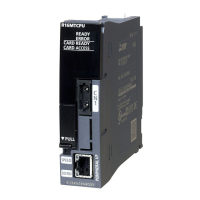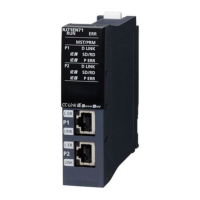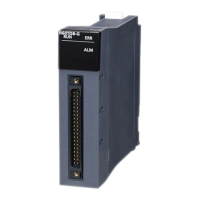19 DATA LOGGING FUNCTION
19.5 Details of Specifications
187
19
Internal buffer
The internal buffer is a system area used to temporarily store collected data.
■Internal buffer capacity setting
FX5U/FX5UC CPU module can change the internal buffer capacity with an engineering tool. (Page 205 INTERNAL
BUFFER CAPACITY SETTING) For trigger logging, increasing the internal buffer capacity allows for a larger number of data
records to be collected before a trigger. and also helps to prevent processing overflow. If the free space in the internal buffer is
still insufficient after increasing the internal buffer capacity, use the following workarounds:
• Increase the data collection interval or timing.
• Reduce the number of data records to be collected.
• Lower the frequency of file switching.
When changing the capacity of the internal buffer during execution of the data logging function, pay attention to the followings.
• If the internal buffer capacity field for the running setting No. is left blank so that the internal buffer capacity for the setting
No. will not be used, an error will occur when the data logging is resumed after it is stopped. (An error will not occur when
data is written to the CPU module.)
• If the internal buffer capacity for the running setting No. is changed to a value smaller than the set value, some data may be
lost when the data logging is resumed after it is stopped.
■Amount of internal buffer consumed
This value can be calculated by multiplying "Number of data points" by 2 bytes. Note, however, that additional space is
consumed by columns configured for output, as indicated below:
• Date/time column: 10 bytes
• Data collection interval column: 8 bytes
• Index column: 4 bytes
When data logging is configured to collect as much data as one setting 128 records and output all of the columns (i.e.,
maximum allowable configuration):
128 2 + (10 + 8 + 4) = 278 bytes

